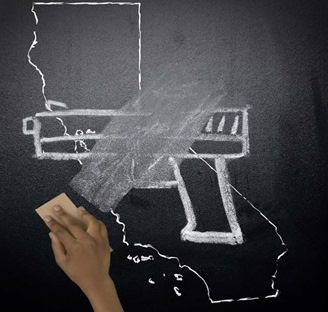As most of us are preparing for the holidays, my thoughts go to a group of families bracing for the one-year anniversary of an event they wish they could forget: the mass shooting in San Bernardino on December 2, 2015.
On Friday, hundreds gathered to remember the victims of that horrific day when gun violence claimed 14 more lives and left 22 people with serious injuries. It was a day when the survivors and the victims' families joined the ever-growing ranks of those whose lives are forever changed because of guns.
It is a club that no one wants to join -- and I am a member of it, too. On an August day 34 years ago, my sister Vickie went to work and never came home. She was 28 years old. Just weeks before she was murdered, she had been the maid of honor in my wedding. To this day, I'm quick to go to a dark place when a loved one doesn't reach out to say they've arrived safely at their destination.
It's my version of post-traumatic stress, and I am certainly (and sadly) not alone. Across this country, hundreds of thousands of people live with the anger, the loss and the trauma of losing a loved one to guns.
Every year, guns kill more than 30,000 Americans, the equivalent of the entire undergraduate population at UCLA. Think about that for a moment -- the lives of 30,000 moms, dads, kids, sisters, brothers, lovers and friends cut short in an instant of mayhem, with legions of loved ones left behind to wonder why.
The bloodshed continues nonstop. In fact, mass shootings like San Bernardino have tripled since 2011. In 2016, we've watched dumbfounded as news of these events came our way from cities and towns across the country, places like Kalamazoo, Dallas, Baton Rouge and, of course, Orlando, Florida. Add in the rising number of gun-caused homicides and suicides across our nation, and we have an epidemic on our hands. Here in California, almost half of adults say gangs and gun violence are a regular part of their daily lives.
But there is hope. Amid the carnage of the past year, Californians have come together to push for change. During 2016, community advocacy groups and our elected leaders in Sacramento worked in concert to enact six gun violence prevention laws, including a requirement that purchasers of ammunition undergo background checks. Another new law -- and one with wide support from law enforcement -- allows family members to ask a judge to remove firearms from a relative who appears to pose a threat.
In another important step, California decided this year to create the nation's first state-funded research center on gun violence at UC Davis. And in the November election, the state's voters approved a ballot initiative that includes a comprehensive set of additional, common-sense reforms.
This was also a year when policymakers, police officers, activists, philanthropists and responsible gun owners came together to plant the seeds for further progress. In February, just two months after San Bernardino, a diverse group of partners gathered for a groundbreaking summit to chart a new course to stem the gun violence epidemic once and for all. At that event, I announced a new pooled fund where foundations and individual philanthropists can come together to stop gun violence in California. The Hope and Heal Fund pools resources and enables partners to invest in better services for victims and their families, stronger advocacy and support for prevention, and research that leads to positive action on issues from suicide to domestic violence prevention.
The progress we have seen on gun violence prevention in California is something we can all be proud of -- but it is also a reminder of how little our national leaders in Washington have done. Even after the brutal massacre of 50 people at the Pulse Nightclub in Orlando in June, Congress did nothing. No additional common-sense background checks. No restrictions on the assault rifles used in so many of these killings. Nothing.
Well, we're doing something.
At a moment when even gun owners agree it is time to act, California is leading the way. But we owe it to ourselves and our loved ones to do even more. At The California Wellness Foundation, we believe that gun violence, like all community violence, is a public health issue. If we have the will, it can be prevented. We can save more lives in our state. We can also inspire others, state by state, to take up the call to action to stop gun violence. In a positive sign of progress, voters in Nevada and Washington state this year approved new rules designed to keep people safe.
We know we can't ever bring back Vickie, or those we lost last December in San Bernardino, or the thousands more Americans whom guns kill each and every year. And we can't erase the hurt felt by so many friends and families like mine who go through every day with a big hole in their lives where a loved one used to be.
But as we think back on San Bernardino and another year of uninterrupted death and suffering, let's build on the progress we've seen in California in 2016. Let's pledge to learn more and do more so that no more families have to endure an anniversary like the one in San Bernardino. Let's hold up our state as a model for the nation, and come together to hope and heal.
Let's stand up and say, "Enough."
Judy Belk is President and CEO of The California Wellness Foundation.
